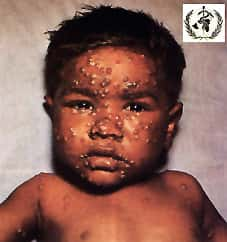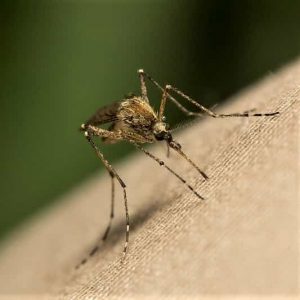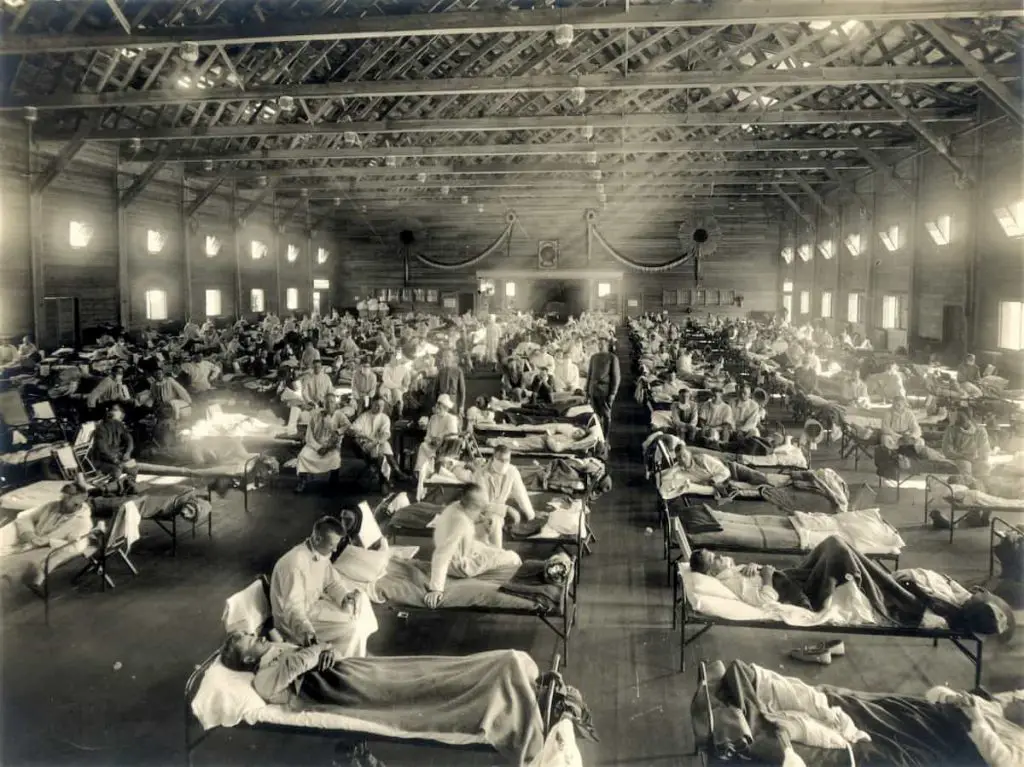Was the Spanish flu the deadliest infectious disease that ever hit humanity?
The Spanish flu
The Spanish flu was a terrible disease that infected more than half a billion people at the end of, and after World War I. It was probably a flu of type A/N1H1. That might not say very much, but it was the same type of influenza as the 2009 swine flu pandemic. Although when it comes to various influenza types, they all are similar but different. They also mutate, so scientists often have a hard time predicting the next strain and finding cures and vaccines.
We don’t know as much as we would like to about the Spanish flu of 1918. Estimates have been made about death rates and how many people got sick, but they’re all very approximative. The total number of infected was around 500 million but could have been as much as 700 million. Deaths were at least 17 million, but some estimates point to 50 million or even 100 million as a possible number. That makes the death rate between 2,5% and 20%.
Why was it so deadly?

The flu came in three, maybe four waves. The first in spring 1918 and it was no more than normal seasonal flu.
The second wave started in August 1918 and this time it was much more deadly. And it was more dangerous for young healthy people than the normal case when lethality is higher for the elderly and children. The reason for this is that it had mutated into a more deadly form caused by the particular circumstances of the War.
When a pandemic hits the community in peacetime, the severely sick is isolated. He stays at home from work and doesn’t transmit his virus to others. Those who have a milder form go on with their life as normal. This way the milder strain is passed on.
In the trenches, the situation is reversed. The milder strain stays in the trenches. The soldiers with the deadlier form, on the other hand, are transported in crowded trains and packed into field hospitals with a high flow of wounded as well as flu patients.
The spread from one country to another, from one continent to another was also facilitated by troop transports.
The third wave came in the spring of 1919, and we can possibly count a fourth wave in the winter of 1919/1920. All these waves occurred with variations across the globe, as the virus traveled. In 1919 and 1920, as the war had ended, the virus turned back to a more “normal” development with fewer casualties for the reasons mentioned above.
Why was it called Spanish?

Many of the epidemic and pandemic flues get their name from where it was first detected. We do not know exactly where the Spanish flu started. It could have been in France, and it could have been in the US. The disease could also have been circulating in Europe for months, even years, without being detected.
Because of the War, the press wasn’t free to tell what was going on. The various epidemics that flourished in the trenches and elsewhere in the horrible circumstances of the war, weren’t reported to the main public. The strong censorship cut everything short.
It wasn’t until the Spanish started to get ill that the world knew about the disease. Spain was neutral during WW1 and they had a somewhat free press. So the first cases that people knew about, were the Spanish. And it got the name, the Spanish flu of 1918.
Other deadly diseases in human history
The Plague

In 1347 a ship docked in the harbor of Genova, Italy. It was a merchant ship and it came from Palestine with valuable merchandise. Unfortunately, it brought rats as well, and some of those rats had flees that were infected with the bacteria Yersinia pestis.
In the four years to come, the Black Plague traveled over Europe killing between one-third and half of its population. It’s estimated that the world population was diminished from 450 million to 325 million. Certain areas were hit harder than others. Especially those who traded frequently with the Orient.
In Venice, the Plague came 69 times from 1348 until 1799. Often they managed to contain the disease through rigorous quarantine measures. But at least on four occasions, 1348, 1423, 1575, and 1630, the pestilence killed at least one-third of the city’s population.
Smallpox
Smallpox is caused by the viruses Variola major and Variola minor. The death rate is around 30%, and even those who survive are often left with complications such as blindness, etc. It’s highly contagious.
It’s been around since the beginning of time. Some of the historical pandemics, that were attributed to the plague, could have been caused by smallpox.

Contrary to the plague, smallpox was causing enormous suffering and deaths even in modern times. It was finally eradicated in 1980. The total numbers are more than those of the plague, but less compared to the world population at the time.
Tuberculosis
Tuberculosis or TB is an infectious disease caused by the bacteria Mycobacterium tuberculosis. Only about 10% of those infected develop the disease, which if untreated has a 50% death rate. TB is treated with antibiotics although not always successfully. In later years multi-resistant strains of the disease have become a major problem.
Today about 1,5 million people die from tuberculosis every year. In 1900 that number was 9 million. In the 18th and 19th centuries, about 25% of all deaths could have been caused by tuberculosis. Today about one-fourth of the world’s population has been infected.
Tuberculosis is the one infectious disease that has killed more people than any other in absolute numbers. And contrary to Smallpox, it’s still here.
HIV/AIDS
HIV/AIDS has killed more than 32 million from the 60s until today. That could be more than the Spanish flu but in a longer time span.
Malaria
Although not an infectious disease, it is a parasite spread by mosquitoes, it should be mentioned. Some scientists calculate that Malaria has killed about half of every human who ever lived on this planet. That could be an exaggeration but already at a more plausible 4-5 %, the numbers reach astronomical figures.

5% of the total of people who ever lived on planet earth is 5 billion. Today about 400.000 people die from Malaria every year, mostly children under 5 years of age, and mostly in Africa.
Other diseases
Then there are diseases that are much more fatal than these but are less spread… Like the Avian flu A/H5N1, Rabies, Nipah virus, and many others.
Typhus and Cholera have caused suffering and deaths for hundreds of millions of people over the centuries… And there are many, many more deadly diseases out there.
The biggest threat to humanity during the ages has never been wars, hunger, or natural catastrophes… It was always infectious diseases.
How can you classify disasters of this magnitude?
It is certainly difficult to start counting infected and deaths when every number is a personal tragedy. When every name of a deceased, to someone, is a lost father, mother, or child. Still, for the purpose of this article, we have to decide what we mean by deadly. The numbers can be counted as a total, or a total in a context. In this case as a percentage of the world population, or as the death rate of those who are infected.
We also have to consider the time aspect. Do we count deaths per year or during the full period of the disease’s timespan?
Spanish flu of 1918. Conclusion
In total numbers, the infectious disease that has caused the most deaths in human history is probably Tuberculosis.
In total numbers, in the percentage of the world population at that time, the deadliest infectious disease in human history is probably the Bubonic Plague.
Most deaths in absolute numbers in one year could have been caused by the Spanish flu from the summer of 1918 to the summer of 1919.
But the fast spread and the disastrous consequences weren’t signs of mortality that exceeded all other diseases in human history. It was an effect of extremely bad timing. When calculating numbers in a global crisis, you have to remember the tragedy behind every loss, the tears, and suffering behind every figure. We are men, women, and children… Not numbers in the statistics.
And we must try to gain experience from the past… Learn from history.
One of the deadliest diseases in human history is Smallpox. It has killed more than 500.000.000 people. On May 8, 1980, smallpox was declared eradicated, following a worldwide vaccination program that started in 1958.
Tuberculosis is still here and it’s still killing. It increased globally until 2005 after which it decreased somewhat. Many HIV-positives die from TB. It’s a deadly combination. About 500.000 die every year because of multiresistant strains. And that is an increasing issue.
No, the Spanish flu wasn’t the deadliest infectious disease in human history. It could have been the disease that has caused more deaths in absolute numbers, in one year, from summer 1918 until summer 1919, than any other disease since the beginning of time, though.
sources
- Healthline / Influenza type A and B
- CDC / The 1918 influenza pandemic
- Smallpox in Africa during colonial rule
- National Geographic / Spanish flu pandemic
- Wikipedia / List of epidemics and pandemics
- All About Venice / Poveglia
- WHO / Malaria
- The Conversation / Four of the most lethal infectious diseases of our time and how we’re overcoming them
